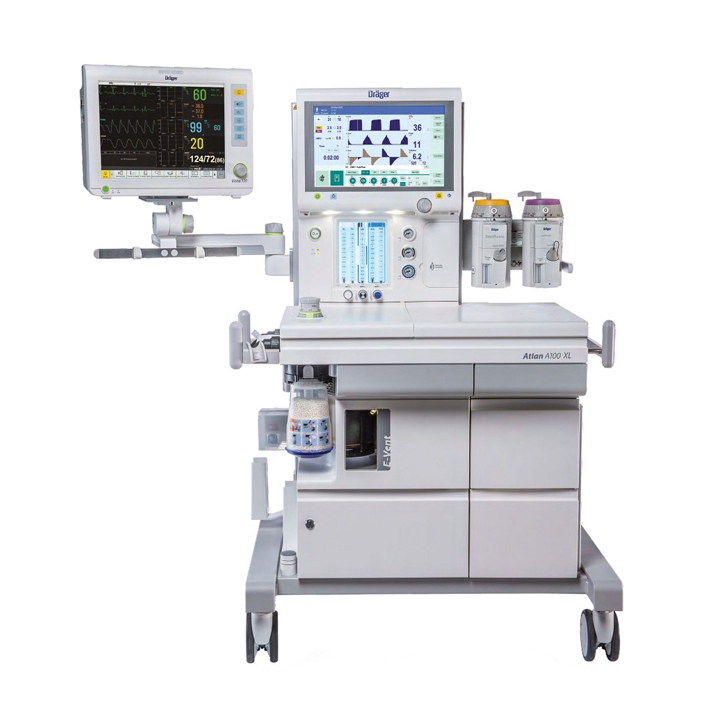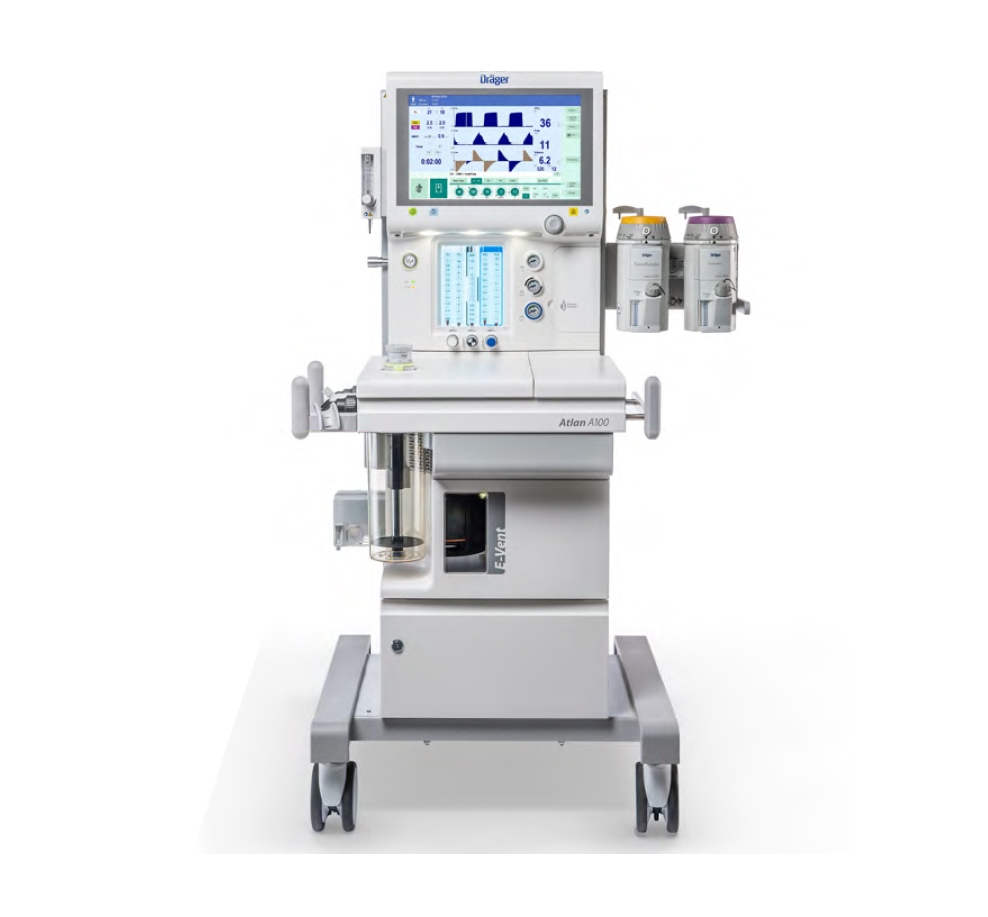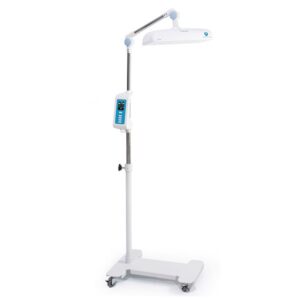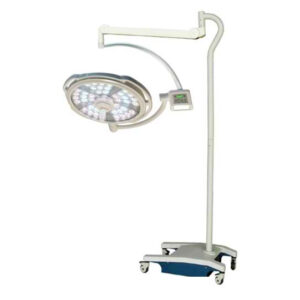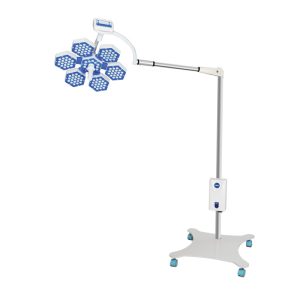Anesthesia Machine Atlan® A100/A100 XL Specifications
| Operating characteristics | |
| Atlan is available in two sizes of trolley, machine with small trolley for environments of use with constricted space, machine with large trolley for normal OR environments with adequate space. | |
| Weight of the compact trolley | Approx. 135 kg (298 lbs), basic setup |
| Weight of the large trolley | Approx. 160 kg (353 lbs), basic setup |
| Dimensions of the compact trolley (may deviate with hardware options) | (W x H x D) 74.5 cm x 140.3 cm x 69.2 cm (29.3 in x 55.2 in x 27.2 in) |
| Dimensions of the large trolley (may deviate with hardware options) | (W x H x D) 93.3 cm x 140.3 cm x 72.4 cm (36.7 in x 55.2 in x 28.5 in) |
| Dimensions of the work surface of the compact trolley | (W x D) 47 cm x 38 cm (18.5 in x 15.0 in) |
| Dimensions of the work surface of the large trolley | (W x D) 71 cm x 38 cm (28.0 in x 15.0 in) |
| Storage space and work surface | 1 lockable drawer, size (W x H x D) 37.9 cm x 15.4 cm x 36.4 cm (14.9 in x 6.06 in x 14.3 in), volume approx. 20 litres, large version with 2 additional drawers |
| Work surface extension, foldable (W x D) 30 cm x 42.5 cm (11.8 in x 16.7 in), option | |
| Side shelves (only for A100 XL model) | |
| Material of the main housing parts | ABS |
| Power consumption | <95 W, during mechanical ventilation, maximum 400 W |
| Mains voltage | 100 to 240 V AC at 50/60 Hz |
| Internal battery backup time | At least 45 min, typically 120 min (with fully charged battery) |
| Data interfaces | 2 x serial ports (RS232) (MEDIBUS.X protocol), 1 x USB port, 1 x LAN |
| Connectivity, interoperability | Support of Data Analytics and Digital Services via Dräger Connect; compatible with Dräger Connectivity Converter CC300 to comply with ISO/IEEE 11073 SDC interoperability principles |
| Auxiliary power socket (option) | 4 country-specific power sockets, individually fused with 2 fuses per socket |
| Intended patient population | Adults, pediatric patients, and neonates |
| Gas supply | |
| Available as a 2-gas version (O2 /AIR) or a 3-gas version (O2 /AIR/N2 O), monitoring of supply pressure and electronic measurement of cylinder pressures (when using optional Dräger pressure reducer) | |
| Central gas supply, supply pressure for O2 , AIR, N2 O | 2.7 to 6.9 kPa x 100 (39 to 100 psi) |
| Gas supply with gas cylinders (O2 , AIR, N2 O) | 1 or 2 standing gas cylinders (option) |
| 2 or 3 suspended gas cylinders with pin-index connector (option) | |
| Park holder for 1 additional standing gas cylinder (option) | |
| Fresh-gas delivery | |
| Gas mixer technology | Mechanically controlled gas mixer with flowtubes |
| Fresh-gas flow (FG flow) | Off to at least 10.0 L/min (O2, Air, and N2O) |
| O2 flush | 25 to 75 L/min at 2.7 to 6.9 kPa x 100 (39 to 100 psi; 0.27 to 0.69 MPa) supply pressure |
| O2 flow with external flowmeter (Aux. O2) | Off to 15 L/min |
| Ventilator and setting parameters | |
| Electronically driven piston ventilator (E-Vent plus), fresh-gas decoupled, ventilation without drive gas i.e. no medical gases are consumed in operating the ventilator (regardless of gas supply). Adaptive piston control for optimized gas exchange times and fresh-gas utilization, piston volume automatically adjusted according to patient category setting and ventilation parameters. | |
| Standard ventilation modes | Manual/Spontaneous (Man/Spon) |
| VC - CMV | |
| Optional ventilation modes | VC - CMV / AutoFlow |
| VC - SIMV / AutoFlow | |
| VC - SIMV / PS / AutoFlow | |
| VC - SIMV | |
| VC - SIMV / PS | |
| PC - CMV | |
| PC - SIMV | |
| PC - SIMV / PS | |
| CPAP / PSV (with adjustable RR for backup ventilation) | |
| External fresh-gas outlet for use with non-rebreathing systems | |
| Respiratory rate (RR) | 3 to 100 /min |
| Inspiratory time (Ti) | 0.2 to 10.0 s (resulting ratio I:E 1:49 to 49:1) |
| Ratio of inspiratory time to expiratory time (I:E) | 4:1 to 1:10 (setting parameter I:E) |
| Tidal volume (VT) at VC modes (setting parameter) | 10 to 1500 mL |
| Tidal volume monitoring, lowest detectable VT | ≤3 mL for the "Paediatric patients" and "Neonates" patient categories |
| ≤20 mL for the "Adults" patient category | |
| Trigger threshold (Trigger) | 0.3 to 15 L/min |
| Peak inspiratory flow | 180 - 220 L/min |
| Inspiratory pressure (Pinsp) | PEEP +5 to 80 hPa (cmH2 O) (7 to 80 hPa (cmH2 O) when PEEP = Off) |
| Pressure limitation (Pmax) | PEEP +5 to 80 hPa (cmH2 O) (7 to 80 hPa (cmH2 O) when PEEP = Off) |
| Pressure support above PEEP (ΔPsupp) | Off, 3 to (80 - PEEP) hPa (cmH2 O) (Off, 3 to 78 hPa (cmH2 O) when PEEP = Off) |
| Positive end-expiratory pressure PEEP | Off, 2 to 35 hPa (cmH2 O) |
| Breathing system | |
| Heated breathing system for low-flow and minimum-flow applications, disassembly without tools, design optimized for easy and effective hygienic reprocessing. All patient-gas leading components are autoclavable. | |
| Total volume without CO2 absorber | 2.18 L when applying the maximum VT of 1500 mL, typically lower volume acc. to patient category setting and ventilation parameters |
| Filling volume of the CO2 absorber | Reusable CO2 absorber: 1500 mL ±50 mL |
| Disposable CO2 absorber CLIC absorber 800+: 1300 mL ±50 mL | |
| Disposable CO2 absorber CLIC absorber Free: 1200 mL ±50 mL | |
| Reprocessing | Cleaning, disinfection, replaceable without tools, less than 13 reprocessing relevant components (depends on the machine configuration) |
| Anaesthetic gas scavenging system (AGS) | |
| Available as active or passive anaesthetic gas scavenging system for operation with or without adequate scavenging system infrastructure; detection of excessive suction flows, with connector for sample gas disposal when using third-party patient gas measurement modules. | |
| Active AGS | For connection to an anesthetic gas scavenging system With a control valve (option) or an ejector (option) |
| Passive AGS | For connection to a disposal system with low or no suction flow With overpressure valve and under pressure valve |
| Displays and monitoring systems | |
| Main screen | 15.3" (38.9 cm) TFT LCD touchscreen, configurable screen contents, smart alarm management with extensive support system |
| Screen configuration | Depending on the machine configuration, simultaneous display of 2 or 3 real-time color-adjustable waveforms for: airway pressure, inspiratory and expiratory flow, CO2 , O2 , and anesthetic agents; tabular trends; quick access to 3 configurable views |
| Front panel | Flow tubes for display of the set fresh-gas flow, pressure gauges for gas supply from central supply and display for mains power supply and internal battery |
| Trends and Loops (option) | Display of graphical trends and loops (Volume-Pressure and Flow-Volume); additional data export functions via USB storage
device |
| Ventilation monitoring | Minute volume (MV) and tidal volume (VT and ΔVT); respiratory rate (frequency); peak inspiratory pressure (PIP), plateau pressure (Pplat), mean airway pressure (Pmean), PEEP; dynamic compliance (Cdyn), resistance (R), elastance (E), external pressure gauge (optional) for indicating the pressure in the internal breathing system |
| Gas monitoring | |
| Available as machine with oxygen cell for inspiratory O2 monitoring or with integrated patient-gas measurement module (PGM) | |
| Machine with inspiratory O2 monitoring | O2 sensor cell with 2 years guaranteed minimum life span and with life span monitoring, electrochemical measurement principle |
| Machine with patient-gas measurement module (PGM) | Inspiratory and expiratory gas concentration of O2, N2O, CO2 and anesthetic agents, automatic identification of isoflurane, sevoflurane, desflurane, halothane, enflurane, detection of
anesthetic gas mixtures, age-corrected xMAC display; sample gas returned to the breathing circuit |
| Safety functions | |
| · The integrated machine checklist and illustrated step-by-step instructions for daily machine preparation help to comply with national guidelines, such as DGAI (Germany), ASA/APSF (USA), AAGBI (UK)
· Man/Spon ventilation with dosing of fresh-gas mixer and anesthetic agents possible even when switched off (emergency start-up) · Backup manual mode allows the direct change to manual ventilation while maintaining gas and ventilation monitoring; anesthetic agents from the vaporizers can be continuously delivered via the fresh-gas mixer · Mechanical ventilation with ambient air in case of complete failure of the gas supply, the change to intravenous anesthetic agents is required |
|
| Comfort functions and other features | |
| · Fully* automatic self-test including calibration of all relevant sensors and checking all valves in the breathing system; normally no user action necessary after start of test
· Autoset function for adjusting alarm limits · Cardiac bypass mode to avoid unnecessary alarms when using the heart-lung machine · Breathing bag as an indicator of fresh-gas deficiency and leaks · Data storage on USB storage device (alarm history, self-test results, screen shots, trends and machine configurations) · Time-saving transfer of default settings and configurations to other Atlan A100/XL machines via USB storage device · Integrated, dimmable illumination of working and documentation surfaces |
|

